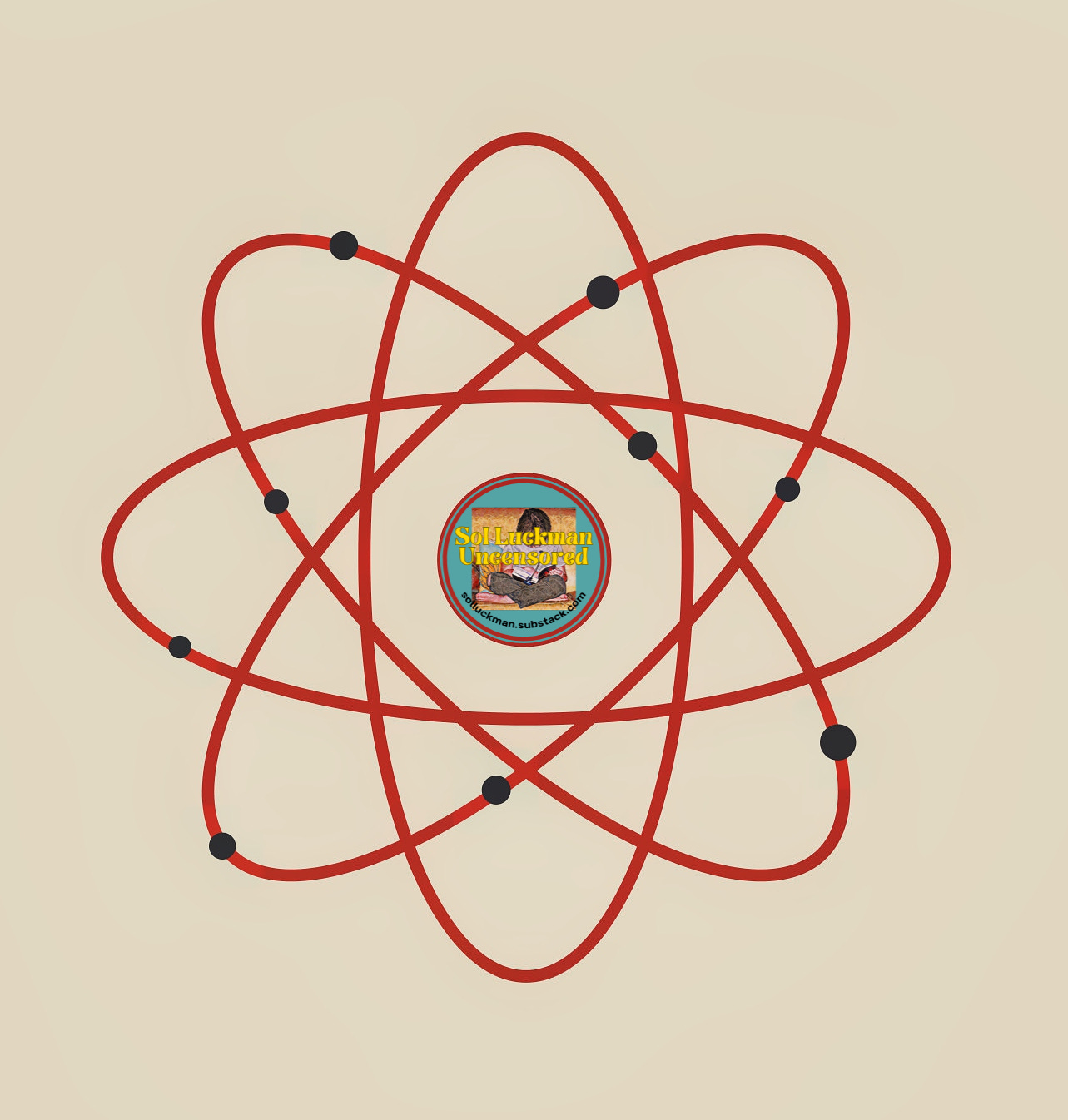🔬 How Changes Made at the Smallest Molecular Level Signal Cellular & Human Adaptation
Causation vs. Correlation
✌️ Sol Luckman here serving up another informative guest post …
Michael Forrester
Something that has always eluded the scientific paradigm is causation. Science is always far behind simple empirical observation—far behind anything remotely relating to the understanding of ourselves and our universe because it does not assess the subatomic forces that guide all matter. Thus, science only knows correlation. Today, discoveries being made beyond the atomic level are demonstrating how forces within living cells determine how they respond to mechanical forces and the human body itself.
A model that integrates rather than separates chemistry and physics is on the horizon as more scientists research the integration of all forces beyond the atomic level of observation. Physics and chemistry will likely be rewritten in many ways as researchers gain a better understanding of the effect of energetic resonance on all things balanced between interacting forces.
While most of biology and medicine focus on the key roles genes and chemicals play in the formation and control of living systems, the spatial arrangement of the components that make up those systems and the physical forces they experience are being increasingly recognized as equally important. Donald Ingber, MD, PhD, Founding Director of the Wyss Institute at Harvard University, started investigating this “architecture of life” over thirty-five years ago, and discovered that Nature uses an architectural principle known as “tensegrity” (short for “tensional integrity”) to stabilize the shapes of living cells and to determine how they respond to mechanical forces.
Biotensegrity is a fairly new approach to learning more about how the human body works. This principle is based on the idea that our bodies are mainly tensegrity structures, and that our bones don’t pass load directly to each other. As such, forces flow through our fascial structures and muscles primarily instead of flowing continuously through the bones. Just as experiencing strong emotions synchronizes brain activity across individuals, tensegrity structures would also synchronize structures within the human body itself.
Tensegrity structures consist of elements that are either in a state of tension or compression, and the balance between those interacting forces allows such structures to stabilize themselves in a state of isometric tension, much like muscles and bones in our bodies. This internal tension or “prestress” allows the entire structure to withstand stresses from outside forces, deform in a controlled way, and spontaneously pop back to its original shape when the stress is removed. The idea that tensegrity dictates the shape and organization of living cells was initially controversial, but as a result of experimental validation in multiple systems, it has gained greater acceptance over time.
A tensegrity model illustrates that it is possible to create a mobile and flexible spinal column in which the vertebrae float apart from each other. What’s amazing about this model is that the vertebrae remain separated as long as the tension elements are intact. Thus, you can rotate them, press down on them, and even turn them upside down. It is also through this explanation that we can better understand the cause of various spinal dysfunctions, such as bulging disks.
Tensegrity can also be hierarchical, in that each structural element can itself be a tensegrity structure on a smaller scale, with tensional integrity being maintained both locally and globally. Based on these properties, Ingber also proposed in a SCIENTIFIC AMERICAN article in 1998 that tensegrity could apply beyond the cellular level to all size scales of life, from atoms to whole organisms. Recent work by Ingber and others has provided experimental support for this hypothesis by demonstrating that tensegrity is used at the scale of cellular nuclei, cytoskeletal elements, and individual molecules. However, investigating how tensegrity functions in complex hierarchical structures that undergo dramatic changes in shape and form (like enzymes and other proteins) has proven challenging, partly because of the limitations of existing biological modeling methods.
Using a newly developed multi-scale modeling method, Ingber (who is also the Judah Folkman Professor of Vascular Biology at Harvard Medical School and the Vascular Biology Program at Boston Children’s Hospital, and Professor of Bioengineering at Harvard’s John A. Paulson School of Engineering and Applied Sciences) and Wyss Staff Scientist Charles Reilly have now successfully demonstrated that tensegrity principles are used across various levels of size and structural complexity within living cells. Their work also revealed how tensegrity-based changes in molecular shape can drive the motion of cellular parts. The research, reported in EXTREME MECHANICS LETTERS, further elucidates the importance of tensegrity as a fundamental tenet of biology.
The team’s new computational modeling approach takes a holistic view, treating each model as a series of mathematical operations that can dynamically change in response to different inputs rather than a collection of static data points. “The difference between our method and other modeling methods is a bit like the different ways you can use Excel spreadsheets,” says Reilly. “If you manually put a bunch of data into a spreadsheet and then change the contents of one cell, it won’t update the other cells around it. But if you use a formula and feed any data changes through that formula, it automatically updates all the cells in the spreadsheet. That’s essentially what we’re doing, but for multiscale models of biological molecules and systems of varying size and complexity.”
This strategy, also known as “procedural modeling,” enables data from different size scales and formats to be integrated into one multi-scale model, building it from the bottom-up and top-down simultaneously, rather than starting with discrete data sets that each describe only one aspect of the model and trying to reconcile them. In a recent publication in ACS NANO, Reilly and Ingber developed this method by combining computer animation software approaches from the entertainment industry with rigorous molecular dynamics simulation tools commonly used in biological research. They used this novel simulation approach to build a model of a sperm cell that demonstrates cellular movement from individual dynein protein molecules in the tail all the way up to the whole cell, allowing them to observe how changes at the atomic level are reflected in larger-scale structures. They also leveraged this advance to produce an entertaining animated film for lay audiences that conveys the beauty and wonder of egg fertilization entitled “The Beginning,” which was published along with the paper.
In their newest article, they show that this same model reveals tensegrity at work across multiple size scales in the hierarchical structure of a living cell. At the molecular level, individual dynein molecules whose shapes are stabilized by prestress were found to have areas of increased rigidity around their ATP binding sites, which resist deformation by incoming energy from ATP and instead translate that force into the dynein molecule’s characteristic movement. The collective shape changes of multiple dyneins generate tensional forces that are exerted on the long, compression-resistant microtubules to which they are bound at a larger size scale. These tensional forces then drive cyclic bending of the microtubules, which causes rhythmic flexing of the sperm tail at the whole cell level.
“This is the first study, to our knowledge, that demonstrates the mechanical continuity, strain transfer, and conformational changes that result from chemical energy release from the atomic scale up through the whole-cell level, as well as how tensegrity guides those changes to drive cellular movement,” says Ingber.
The researchers then modeled a new system with the same process: the mitochondrial enzyme ATP synthase, which also exhibits a distinct conformational change that is dictated by the application of force to the enzyme structure, which is propagated via tensegrity. Changing the concentration of the enzyme’s substrate molecule in the model produced an outcome that described how ATP synthase interacts with its microenvironment. Further investigations suggested that the higher prevalence of enzyme molecules on the inner versus outer folds of the mitochondrial cristae could, in fact, contribute to the physical properties of the microenvironment as well, implying that tensegrity also stabilizes structures at the scale of complex multi-molecular interactions.
“We focused our research in this paper on structures at the cellular scale and down, but this modeling method also can be extended to larger structures, such that you can model nearly any multiscale system,” says Reilly. The researchers anticipate that their approach could be used to produce models for a variety of applications, from mechanobiology to cellular signal transduction to decoding the underpinnings of life itself.
“Tensegrity is a good example of a biological design principle that we have been inspired by here at the Wyss Institute, and that we leverage to create new technologies,” adds Ingber. “For example, working with [Founding Core Faculty member and Molecular Robotics co-lead] William Shih, we built tensegrity-based DNA nanodevices that can be programmed to change shape on demand for biomedical applications, and with [Core Faculty member and Bioinspired Robotics co-lead] Radhika Nagpal, we engineered a self-deforming, modular robot that can perform a variety of maneuvers more quickly than traditional robots. Now that we have a modeling approach that validates and incorporates tensegrity, we hope to be able to study and employ it in entirely new and unexpected ways.”
This article, republished with permission, originally appeared on the now defunct preventdisease.com.
🐦🔥 Sol Luckman Uncensored is an audience-supported platform that offers unique & cutting-edge resources for increasing energy, expanding consciousness, elevating health & upgrading subscribers’ quality of life.
Premium content valued at over $1K includes:
PragmAlchemy, practical energy & self-bodywork exercises for wellness & beyond, a Sol Luckman Uncensored exclusive (🔜)
Exclusive self-help ebooks & audiobooks for deprogramming limited mindsets, improving mental health & mastering manifestation
International bestselling nonfiction ebooks & audiobooks on the “revolutionary healing science” (NEXUS Magazine) of the Regenetics Method
Award-winning conscious novels & audiobooks focused on themes of empowerment, awakening, lucidity & gnosis
Award-winning humor & bestselling memoir with an emphasis on freethinking, creativity & authenticity
Exclusive indie music albums & videos featuring expansive lyrics & themes for the consciousness crowd
& so much more!
✌️ Sol Luckman here. If you appreciate the labor of love that is my Substack, join other freethinkers seeking to transcend today’s hive mind by not just surviving but THRIVING. Please …
Smash that like button!
Comment!
Share with fellow curious minds!
And if you haven’t already, commit to your own healing & transformation by starting your FREE TRIAL or GOING PAID!

















Fascinating . Thank you for sharing
Such an interesting way of looking at the interface between the micro and the macro. 👍